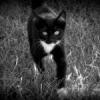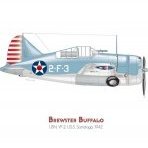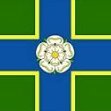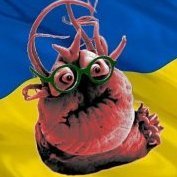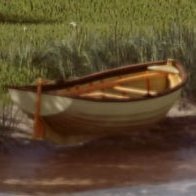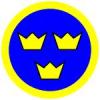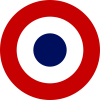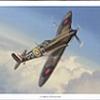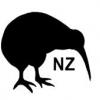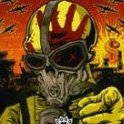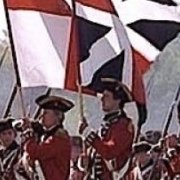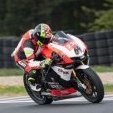Leaderboard
Popular Content
Showing content with the highest reputation on 20/04/19 in Posts
-
Here are the photos of my latest, the 1/72 Airfix He-111 modelled in a Battle of Britain scheme. The kit goes together pretty well and the only things to watch out for are the fit of the wheel bays in the intakes and the fuselage windows. It's got the Eduard interior extras which look lovely but unless you look closely they're pretty hard to see. I also riveted the whole aircraft (which I think was worth the effort) and re-built the wing Pitot from a blunted safety pin and bit of sprue. The paints are airbrushed Tamiya and Mr Color acrylics (I think the Mr Color RLM acrylics look great here) and I've used a combination of Xtradecal BoB and box transfers. The slightly weathered effect came mostly from preshading but I also added some streaks and stains with white, black and brown artists oils. Finally, the white-pink bars on the wing and tail are based on the photo at the end where it appears that the Luftwaffe were about as a good at masking carefully as I am! The RFI is here: Thanks to everyone who looked in and helped along the way, enjoy! Sam39 points
-
I’ll have a detailed write up soon. I have to transfer it to my phone. Resin seats and TwoBobs decals. The GBU-38s are Brassin and the GBU-31, AIM-120, and AIM-9X are from the Tamiya Viper kit.25 points
-
Dear modellers, I like to show you, how I built most of my models in scratch, in scale 1/48. After building so many model kits, I wanted something different. I always wanted some Fokker models in my collection, pity for me, there are only a few kits. So I figured out a way, to build models in scratch. Of course it took some time, and much trial and error, but at last it worked right out for me. The materials I most use are 0,5mm – 2.0 mm plastic sheet, sometimes wood for the wings and to form difficult pieces with double curves. DVD boxes for clear parts and finally self-adhesive aluminium tape. At last I managed to print my the decals on my PC. Well, as the saying is, a few pictures tell more then many words, I hope you enjoy the photographs and maybe they offer some inspiration : And here the finished model: Happy Easter to everybody ! Greetings, JohnHaa21 points
-
This model represents an aircraft of the 343rd Fighter Group, flown by Leading Airman Ikuji Matsumura. A very nice kit. I added the RB Model Brass 20mm Japanese cannons Type 99 Mk. 2. I bought these for the soul reason that they were on sale dirt cheap. I used Uschi van Rosten rigging thread (0.02mm) for the antenna wires. This is the ultra fine size meant for 1:72 rigging but I think it is more to scale for 1:48 antenna. I painted the innards Tamiya XF-58 Olive Green lightened with XF-4 Yellow Green. Camo was done with Tamiya XF-11: J.N. Green over XF-16: Flat Aluminum. This is the first time that I’ve tried the hair spray chipping method, a work in progress shall we say. This is also my first attempt with Tamiya Panel Line Accent Color: Dark Brown. Again…a work in progress. I used the kit decals save for the fuselage stripe which I painted on21 points
-
Eduard kit, in my opinion the best 1/48 kit ever produced(no affiliation to Eduard, or anyone for that matter) Xtradecal decals.... Woah, unflatteringly large photos there!! Cheers for looking.. Owen15 points
-
Hi all, this is the eduard fw 190 d-11 (weekend kit) the markings are of a versuchsmuster aircraft. (<57 w. Nr. 220011) which may have been taken on by jg 101. This aircraft was found at schongau May 1945.(Used to test the use of R4M rockets by the fw 190 d). These were due to be uses opperationally in the summer of 1945. The model is eduard fw 190 d-11 (weekend) Decals are by Eagle cals True details wheels Seat belts added Eagle Editions R4M rocket rails Brass tube for gun barrels. Extra colour rlm 76, 82,83 Exhaust stains are pastles Streached sprue aireals Thank you for looking. Feedback and comments are welcomed. Nick14 points
-
Built over a number of years mostly due to frustration with the kit/builder interface, even did something else for about 10 months or so, but finally it's finished. Focke Wulf Fw 190V-18 Wkn.0040 CF+OY 1/72 scale MPM Kit No.72033. Built 05Oct2015 to 13Apr2019. The box, A bit of history, "The Fw 190V-18 was originally an Fw 190A-0 W.No.0040 CF+OY that was modified for high altitude work by Kurt Tank originally utilising a Daimler Benz DB603G engine, but due to development probs with the engine the aircraft stood in a separate hangar for weeks so Tank decided to install an interim installation of a DB603A-1 with the TK9AC Hirth turbocharger, designed to boost power output in the rarefied air at high altitude and fitted with a four blade propeller. It turned out that there were not going to be any problems installing the engine, the turbocharger was going to require a number constructional changes. It was fitted below the fuselage with the large air intake, reminiscent of the P-51 Mustang, almost touching the ground! The engineers used a turbine propelled by the engine exhaust fumes, which were transferred by two long ducting pipes' running along the fuselage sides. The turbine propelled a compressor and the compressed air was cooled and delivered to the engine compressor. When all that had been dealt with, the engineers and mechanics stood round their creation to have a look at it. One of them said carelessly "Look what we've created." "A 'kangaroo'" another one replied. The name was unofficially accepted, and from then on, both DB603-fitted machines were called 'Kangaroos' at Focke Wulf. An unfortunate name really as they were really only capable of short 'hops'. Foreseeing flight stability problems, the engineers gave the Fw 190V-18 a broader chord vertical stab and rudder. On 10Dec1942 the V-18 was sent to Daimler Benz at Echterdingen, where factory test pilots could not handle it at all. The aircraft would rather jump than fly. "After all, it's a Kangaroo," one pilot reportedly said. Therefore Kurt Tank instructed Focke Wulf's chief test pilot, Hptm Hans Sander, to personally test the V-18 in flight. On a cold January morning Hans Sander climbed into the cockpit and commenced take-off procedures. Getting airborne correctly he climbed and disappeared into the cloudy sky. Less than an hour later he returned to the field and on landing the aircraft rapidly dropped it's tail the tailwheel hitting the ground. The aircraft leapt just like it's namesake!! If it were not for Sander's experience he would've been killed, but he managed to wrestle the aircraft back to a three point landing as he would have with a normal Fw 190. Even so, the V-18's tail rose a few more times causing some rapid changes of taxi direction before coming to a stop. He switched of the engine, and sat motionless in the cockpit for a while taking deep breaths. When the designers ran up to the cockpit, he got out and discussed the flight with them; unstable in the climb, impossible to trim with a tendency to snake at altitude. He then proceeded to fly nine more take offs and thankfully for him as many landings before he informed Tank the aircraft was a complete failure and indeed dangerous for pilots at this stage. It had multiple stability and power problems, leading Sander to conclude that it was completely unsuitable for flying before extensive modifications were carried out. A special team of Focke Wulf technicians and Daimler Benz engineers were immediately set to work on the problems, just where to start? It was now called the Fw 190V-18/U1 and flew another 30 hours with various mods without any considerable improvement to it's performance or handling. When the V-18 achieved 680kph at 11000m the engineers were delighted but an irritated Sander stated "I could have achieved the same without that damn supercharger!" This was not the end of the 'kangaroo' saga as Fock Wulf built a further five prototypes based on the Fw 190A-1 incorporating the lessons learned by the V-18 during it's flights. Slowly this attempt to produce an FW 190C was abandoned." The finished build, More pics soon,13 points
-
Possibly the finest fitting kit on the market and an absolute joy to build. Straight from the box other than eduard prepainted cockpit.. BTW the nose probe is not fitted as it just fits in the display cabinet without it!13 points
-
I present the RusAir resin IL-18 finished as CCCP-75717 an early “Salon” IL-18V. Built in 1961, the real aircraft was initially used for transporting VIPs, who apparently included Premier Nikita Krushchev and pioneering cosmonaut Yuri Gagarin, until that role was taken over by jets. In 1975 it suffered an undercarriage collapse and never flew again, probably being broken up for spares Although I tend to avoid resin kits I make an exception for RusAir. Their IL-18 is absolutely gorgeous and a joy to build. I really can’t speak too highly of the moulding quality and attention to detail which are streets ahead of any other 1/144 IL-18 kit on the market. In the normal style of Russian resins the fuselage is split vertically like a conventional injection moulded kit and not solid like Authentic Airliners or Welsh Models. Rus-Air thoughtfully provide holes to drill for locating pegs to assist with fitting the wings and tailplanes. They even give you slots for plastic tabs to help align the engines. Very little filler was required, in fact one wing root and the number 2 engine needed none at all. The only slightly fraught part of the build was assembling the separate propellor blades and hubs. These need really careful handling. The blades must be sawn off the casting block, trying to use a knife risks breakage as I found out the hard way. It’s also quite easy to get the blades back to front, another thing I found out the hard way. The original plan was to use Revaro decals. They were designed for the Eastern Express kit and preliminary checking with photocopies suggested there would be minor fit issues on the RusAir model but nothing unfixable. However when I actually came to use them the Revaro decals flatly refused to soak off the backing sheet and they really aren’t a product I could recommend. The upshot was that I had to use the kit decals - shock, horror! Slightly to my surprise these turned out to be pretty decent and I ended up wishing I hadn’t wasted money and effort sourcing the Revaro sheet. With the liberal use of Microscale Liquid Decal Film and plenty of strong (red label) DACO solvent around the nose the kit decals coped stoically with many indignities. The end result is by no means perfect but if you want an early Aeroflot IL-18 it’s the only way to go once Revaro is ruled out. White paint is Halfords and natural metal is AK Interactive. There is very little weathering on the model - it's reasonable to assume that an aircraft used for transporting the Premier would be kept clean! I enjoyed the Rus-Air IL-18 so much that I’ve bought another one which will probably end up in Malev livery. I’ve also pushed the boat out and bought their limited edition Tu-114 which I wanted to grab before it went off the market. That should be a challenging, fun build. Thanks for looking and as always constructive criticism is welcome. Dave G12 points
-
How about an inexpensive kit built "Out of Box"...This was challenging in its own way but fills my need for a P-47 in D-Day markings. Xtradecal has outfitted a few models for me recently. X72196 has quite a collection of Overlord markings. Are there issues, sure but looks like a P-47 to me. Gun Barrels aren't offset a whole lot, engine is oversimplified(Try seeing though)wheel well details are sparse, interior is non-existant (also try seeing it). Surface detail is nice and construction was about 6 hrs and only a couple of fills need on the fuselage sides. Painted with Vallejo Air Colors and painted on stripes.Uschi powder on the prop spinner boss Should be my last "striped aircraft" for awhile. Thanks for taking a look and feedback is always welcome Cheers Bill11 points
-
Hi Everyone, Just finished the third of my haul from Telford last November, so I thought I`d trouble you with some photo`s Czech Models 1/48 scale Curtiss A-12 Shrike kit Finished to represent an aircraft of No 26 Bomber Squadron, No 9 AG, Chinese Air Force, 1937-38 Which was an option in the kit Built mostly from the box with the exception of the fragile resin frames and flying control actuators which were broken into little bits in the bag and.... replaced with bits of wire, tube and plastic strip. Took three attempts at the rigging before I got it looking barely acceptable and can`t count the amount of times I broke the undercarriage struts. Suffice to say I`m glad it`s all over. Hope you enjoy the pic`s. Thanks for looking, Cheers Russ9 points
-
Hello friends, A small little tabletop that still makes me happy, when I finished it after a long time. Model is from eduard 1/48 scale. Cheers Andy9 points
-
I attach a few pictures of completed in October 2018 model of Convair B-58 "Hustler" from the recently reissued Italeri offering - probably the only one in 1/72 scale. I have used the following aftermarket upgrading: Airwaves PE set, Eduard PE inspection panels and 'Remove before Flight' steel flyers, Aires resin exhaust, metal MasterModel Pitot tube and electrostatic dischargers. I have reworked the crew compartment hatches, crew seats (to the early type) and landing gear. I have used the Caracal decals. The model has been painted with Tamiya acrylic and finished with Gunze and Alclad lacquers. Thanks for watching!9 points
-
Long ago, my older son, also a modeler (and a very good one, not that I am his father) built an Aeroposta Argentina civil passenger plane based on the Italeri kit and dedicated the build to me when he posted it on a known modeling site. Now it's time for me to build another and dedicate it to him! I have been always fascinated by the role of Aeropostale and Aeroposta in Argentinean aviation, where the names of Saint-Exupery, Guillaumet, and Mermoz , together with local heroes, stand prominently. One of the machines used by Aeroposta, most noticeably in the southern routes to and from frigid Patagonia, is the civil version of the Junkers Ju/52m (mainly "ge" machines). I always steer clear of the nauseating nazi symbols, so this is a good opportunity to redeem this machine with a much better meaning and story. Some photographic references exist covering 5 machines: Tierra del Fuego Ibaté Pampa Quichua Patagonia. I base my conversion on the Italeri civil issue of this kit. Whilst others exist (Heller, Airfix, Revell re-issue) all have their particular quirks. The Italeri civil version kit, if lacking in some areas, at least had the aft fuselage gun position deleted and the pants, plus a full civil interior. Looking at photos it's evident that the different machines listed above changed a bit during their lives, and differed among themselves in some details. I did not want to have to deal with too many changes, so I leaned towards the machines that do not need new cowls, props, or engines (some received at some point P&W or Wright engines, three-blade props, and different cowls). Other details to consider are: -number of oil cooler "tubes", grouped under each engine either in twos or threes, and some times mixed installations. -wheel pant decoration, which varied (and pants sometimes were removed). -Presence of a door on the nose, right fuselage side, immediately after the cockpit, absent in the kit. -deletion of big cargo door on the right fuselage side, present in the kit. -possible addition of two barely visible hatches after the cabin, both sides (one is marked on the kit from inside, the right hand-side one. At some point, to my immense joy, I realized something very interesting that I have never seen in any artwork, or plans: since these planes operated in bad weather and an awful number of times in snow or snowed territory, some paint schemes include a high-vis color on top of wings and stabs. I deem that color orange, as per well known practices. Only few photos show this scheme, but they do it very clearly. All planes had the rudder painted with the Argentinean flag colors, but many times the rest was left on bare metal (besides company marks and registration). Some photos show a machine with the typical "curvy and pointy" ex-Lufthansa black nose and engines. I was elated as said with that discovery, and as photographic evidence started to confirm it, I ordered as said the Italeri kit. Upon getting the kit It was immediately obvious that, if some efforts were done to produce this "civil" version, said efforts were a bit lazy, half-hearted and ill-informed. The list is long, so do your own research looking at photos (NOT only at drawings, side views and the like, many times inaccurate) and compare your kit with the desired machine, as I did. Italeri provides in the sprues two alternate parts for the cargo area, one of which would be pertinent (the two-window one) IF the corrugations would match those of the fuselage. What a blunder, so much for a seamless transition. Now, as we all know, replicating corrugations is not easy but certainly can be done, but I don't want to spend the time, so I just ordered another kit to cut a piece of the fuselage and splice it to the first one, plus need more cannibalized surface to make the front door to the right, shamelessly absent form the kit and present in all civil versions I have photos of. Failed on homework, Italeri! But both kits were inexpensive, being old issues an second hand. There is small hatch (molded from inside in the kit) that you could cut open. In one photo that hatch can be seen removed (which I may replicate). Photos show a second hatch to the left, absent from the kit, but present in company's drawings. So, changes needed for ALL five AEROPOSTA machines: -Delete large cargo door on right fus. fixing the inaccurate corrugations on kit part. -Need to add the front fuselage door on the right side, right behind the cockpit. The passenger door is as per the kit, no problem here. Tierra del Fuego, Patagonia and Pampa had the Argentinean flag along fin and rudder Quichua and Ibaté only on the rudder And individually Tierra del Fuego: Scheme a) Engines and cowls as per kit, 3-3-3 oil coolers, plain aluminium. Scheme b) Painted on high-vis: 2-3-2 oil coolers, new PW engines and cowls, no wheel spats, new Hamilton Std. three-blade prop with spinner, Quichua: High-vis, 2-2-2, double line pants, need to change the 3 cowls to Townend rings. Patagonia: 1) cowls/props as per kit, 3-3-3, inverted light color single triangle on spats, curvy and pointy black (Lufthansa style) decoration on nose and engines, 2) No colors on fuselage, double line spat. Pampa: 1) cowls/props as per kit , 3-3-3 oil coolers, no decoration (plain aluminium). 2) high-vis decor, double line spats. Ibaté: 1) High-vis, 2-2-2 oil coolers, double-line spats, same scheme with and without engine shields. Of these the one that I may be modeling is Ibaté, which had a crippling emergency landing on very bad weather and snow. The passengers, fortunately only a bit shaken (but including women and children) had to wait four days to be rescued by a walking party, and walk many kilometers on thick snow to get horses, and then ride some more, while another plane (Quichua) dropped some supplies. The story is long and fascinating. May be I will translate it if I have the time. Do not blindly trust the side views or 3 views you may see of the planes cited above. If no doubt well-meant and the work of love of someone that cared, most contain inaccuracies. Look at photos, as much as you can find, of the machine you intend to replicate, and start to take notes. Argentina had of course other Junkers Ju-52 used by LADE (Líneas Aéreas del Estado) and for other purposes, among them cropdusting by the Ministry of Agriculture (and Silly Walks). Many other Latin American countries (Brazil, Bolivia, Uruguay, etc.) had a number too. The kit's fuselage sides, with the problems explained above: Different corrugation pattern, inaccurate for these Junkers: Front door inexplicably absent from kit: This hatch may me opened: Look, mom, no gun position!: But instead a sink mark!: Caused by Italeri leaving the gun position paraphernalia inside: Parts for the seats provided: And other nice details (aft bulkhead with folded seat, a bit different on the planes listed above). I will open that door that leads...yes! to the restroom. Toilet, here we come!: Two cabin floors, in this case of course the one with the seat recesses is the one to use. Now, some civil Junkers had the seats pointing slightly inwards, so which is the case with Aeroposta? Don't miss the next episode!:9 points
-
Evening all, I'm taking a temporary break from the Ju52/1m project as I need to get more comfortable with the foiling process. To try and get a handle on what to do, and of course what not to do before I attempt it on the Ju52, I've dug this out of my stash: I will be honest and say that as a rule, jets don't do a lot for me, and certainly not the modern ones. Having said that, I felt this was ideal for my purposes as there isn't an awful lot of faffing around to be done on building the thing to a point where I can start foiling. I am going totally OOB for this, aside from the foil that I end up putting on the exterior. So, I won't bore you with sprue shots or pics of the initial build - suffice it to say it's the very definition of shake-n-bake; it's a very good quality kit aside from the hideously wide tram lines where the panel lines should be. Not much needed in the way of cleaning up, no flash, no ejector pin marks worth worrying about. The choice of paint schemes is quite interesting, and on another day I might have been tempted by the North Korean scheme or even the Hungarian one. However, the one I want to do is the Soviet one, which is literally all bare metal save for the insignia and a red nose ring at the front. Works for me! I deliberately avoided fitting the wings and any other paraphernalia so as to make the foiling process as easy as possible - not that easy is necessarily the most appropriate way to describe this! The pile of scrunched up foil on my bench is an early testimony of how 'easy' it's going to be! From that, I worked out that the tops of the wings are quite possibly the worst place I could have started. So I turned my attention to the fuselage: OK not a lot to write home about yet, and I freely admit this may not be the absolute best way of going about it, but at least it lulled me into a sense of achievement. This could all unravel of course! I used a toothpick (sanded to round the end a bit) to smooth the foil and to press it into the panel tram lines. The excess was trimmed away carefully by running a scalpel down the line. Things seemed to get easier after the first panel was applied, even though the curves tended to differ with each one. I think I get the notion of smoothing out from the 'high point' to avoid creases. I didn't manage that all the time, but I was able to buff out the worst of them with the side of the toothpick. Cutting out round recesses like the air brake panels was a bit interesting, but once I'd tidied it up and run the toothpick around the finished edge it looked OK. Similar story with the tail, requiring several little pieces: The underside panels I did with a single piece, as they were all very similar in their curvature - I just scribed the panel lines with the toothpick and all was good: So there it is, we're off and running. It's not been too bad an experience so far with the fuselage, but I know I need to re-think how I do those wings!9 points
-
A time was had Ced! A pretty below-average meal in a Korean restaurant it has to be said (last time I trust Tripadvisor notices regading nosh) but good catching up with my cousin and her daughters who've now moved over here. Oh how you feel the baton passing between the generations when the cousin you used to lob apples at as kids in yer gran's back garden has a daughter about to qualify as a lawyer. (And like all members of the legal profession she knew all the good watering holes round that part of Dublin where many solicitors have their chambers, taking us to a gorgeous little set of rooms for coffee and cake where you could sit upstairs in a loft-type affair and look out over the street through the kind of windows you only get in Jack Aubrey's cabin...) Prior to lunch I did get to pop into Mark's Models in Hawkin St. I'm basically supporting their pension fund one piece of brass at a time and managed to dig out a 15.8mm piece of brass tubing that will be perfect to do redo (for the third time!) the starboard engine cowling on the Annie: It means having to cut out the undercarriage opening and various openings all over again but with the passage of time I grew less tolerant of my last lame effort effort in this region so that the maxim 'don't try and rebuild out of scraps what somebody's already made an excellent job of producing a blank for' had grown ever more insistent over time. More on that job when(ever) it gets attended to. Aside from the metal, chatting with the owner (lovely guy) revealed that an elderly modeller had dropped in some old catalogues he no longer wanted to give away at the till so I scored this: I wonder how many of you remember this issue from 1976? Talk about being age 11 all over again! For some reason the 'tips' section at the back had always lodged in my visual cortex - that transfer being put on the Blenheim's wing most of all: Odd what fragments of the past remain impressed upon you isn't it? Enough to make Proust dip his madeleine in some Klear... Johnny, Bill and AW: I'm going to have to investigate this path gentlemen - thanks to all three of you for the reccomendation. I hear you and agree Johnny. I literally wanted just a rough segment though to export into the Silhouette software in this instance, knowing that it would undergo plenty of adjustment and revision there during cutting out of the Washi test outputs. Like all obsessives I've a tendency to try and put too much polish on at every single step of the way and have to keep reminding myself that it's a process where you can decide at what stage to really dig in to the final tolerances. It seems to be going OK thus far, though I've yet to cut and test these: And it is currently looking a bit New Order album cover possibly... 🙄 It can happen so easily too can't it Chris? Looks like we're both on the hunt for a Pilates teacher mate. 👍 In and amongst everything else going on, some further work did occur on the turret: That central slice had to come out in order to build some convincing looking framing both for the sliding 'central door', and the runners into which it fits. The original Airfix part I gave away as too crude for my purposes but the Special Hobby moulding for this parts looks pretty OK from what I see in photos (although it lacks the wind balance vanes of the original and is frequently incorrectly painted with a transparent - rather than opaque - central strip at the back into which the sliding door runs up and over into.) This is my attempt at building the runners and balance vanes: 0.3mm tubing flattened and rolled to the correct curvature, with the vane soldered on top being an offcut of PE reshaped with a file. Have to say that in gluing the runner to the turret, that the GS-Hypo was mightily impressive in respect of attaching two curved surfaces strongly to each other with a minimal gluing area, but learned that it pays to use plenty of micro-strips of tape to hold the parts in place whilst drying, due to the tendency of the brass to spring up if the turret flexes between your fingers: The eventual result: Once the glued has dried I was able to gently sand the wind vanes down to follow the curvature of the original: I've also dipped that part in Klear, which should assist with the bonding of those metal strips. At some point during these proceedings I've knocked the cut-out section of the central door into the void so will have to fabricate a new part but that's anough for today. A final squint with the innards in place to see how inside and out match each other: Bit of tidying up of swarf needed in a few places with a scalpel blade but otherwise that glazing should sufficeand can be masked. I've put the kit part for the Vickers in the shot for you to see also: it's a bit 'Minecraft' to look at of course, but some judicious cutting and adding of detail should enable me to give a decent representation and have it hanging in the turret ready to be mounted. Hope you're all enjoy either your weekend or some modelling or both! Thanks for watching. Tony9 points
-
Hi.....this is the last born.....1\48 Gwh T-33A in Italian colorfull dressing.....8 points
-
I’ve always loved GHQ’s ‘Micronaut’ line of 1/2400 scale warships. Intended to be used as wargame counters, these models are simple to assemble and ridiculously tiny, but the detail on them is first rate! This one is one of the Japanese navy’s ill-fated light aircraft carriers, the IJN Ryujo. I started by cleaning up an old Nichimo 1/200 U-Boat stand. Taking a sheet of high quality artist’s drawing paper intended for watercolors, I traced and cut out an outline of the ship. After gently rolling the paper over a pen to create a lightly undulating “sea”, I lightly attached it to the base with dots of cyanoacrylate (super glue). Once I was happy with the positioning, the whole paper got a soaking with the cyano. This fixed it securely in place and made it rock hard. Then I trimmed the paper and sanded the sides smooth to integrate the sea seamlessly onto the base. The sea base was painted with a coat of Tamiya Royal Blue (X-3) acrylic with enamel paints for the wake. The sides were then shot with Tamiya Desert Yellow (XF-59) acrylic followed with a streaky coating of Winsor & Newton Burnt Sienna artist’s oil (with just a touch of Burnt Umber) to simulate the look of a wood base. Now back to the ship! To depict the Ryujo as she appeared at the time of her loss at the Battle of the Eastern Solomons on August 24, 1942, the model was painted in Tamiya Kure Naval Arsenal Gray acrylic (XF-75). Then I applied the decal to the previously glossed flight deck. The end result is quite effective – and SO much easier than painting all this would have been! To complete the paint job, I added small details on the boats and funnels followed by a thin dark gray oil wash over the gray acrylic to outline details and deepen recesses. The ship was then attached to the ocean base with Soft Gel Medium, a clear viscous polymer used by artists as a thickener for acrylic paints. It works great as an adhesive, too. As with all Imperial Japanese Navy aircraft carriers, the Ryujo carried multiple masts to support communication antenna wires. These masts rotated down to horizontal during combat or flight operations. Matching the dimensions of a scaled down drawing of the vessel, I cut the three smaller units from brass wire and attached them to the ship with polyvinyl acetate (PVA) glue. To replicate the main mast’s lattice structure, I repurposed a type 13 radar from a 1/700 scale Japanese destroyer photoetch set, cutting the piece down and attaching it to a wire cut to the appropriate length along with a yard and antennae spreaders. As a final step, I installed copper wire rigging taken from an old coil. This stuff is about as fine as human hair, but even so it is fairly heavy for 1/2400 scale. I added just a representative sampling of the ship’s rig to keep from overwhelming the little model. The tiny IJN Battle Ensign is a Peddinghaus decal from their 1/1250 scale “Marineflaggen Japan” set. And done!7 points
-
This is my first go at a 1/48 kit - I've always preferred 1/72 but my eyes are beginning to complain! It's an OOB build which is actually out of the box. Nothing added at all, which I now regret as the wonderfully detailed cockpit that Airfix supply is crying out for some etched seat belts. Oh well.. Happy Easter Hols! Ian7 points
-
Friends, This is the Airfix P-51D Mustang. I am certain that everybody is well aware of the superb nature of this kit ( and at a very reasonable price too ) so I won`t go into detail regarding that aspect. I found these aftermarket decals ( Super Scale sheet #72-907 / 362, 363 FS - 357 FG ) at the 2017 Columbus ( Ohio, USA ) model show. What interested me with these markings is the rare sight of a Delta ( D ) variant of the famed Mustang in green & gray camouflage colors. Even of more interest was the the 362nd Fighter Squadron used colors from local British supplies. The upper surface is RAF dark green over RAF medium sea gray under surface. Getting the red & yellow bands on the spinner aligned properly proved to be troublesome. Despite all of that, I hope everyone enjoys this unique scheme on a European Theater Mustang. And yes, I highly recommend the kit!!!!!! Thank you in advance!!!!!!!!! Respectfully submitted, Mike PS: Again, my apologies for the picture quality.7 points
-
It's taken a while to finish this one as I had a couple of pieces go missing so I had to buy a new one as I had no joy with airfix but on the whole a nice kit to build with no problems. I haven't put any rigging on as I had nothing suitable.7 points
-
wow. I can't believe it's been a month since I posted on this thread. Life really gets in the way at times. Circumstance has transpired to prevent me from entering the modeling cavern in recent times and when the opportunity did on that rare occasion present itself, the mojo had gone off for a vacation. 'Nuff said. I do have an update though it is a rather pitiful compared to some of the work that I see you other lot doing... yes, you all know who you are! You certainly know how to make a guy feel inadequate! Anyhow, I actually had to read back a couple of pages to find out what I had been doing - it tuned out to be the winch. That was kind of lucky since this follows on from the winch... Das Hook! Now where would the winch be without a hook? Of course, as I think I mentioned before, most of the kit supplied resin hook had been trashed in transit. Which was no great loss to humanity as it didn't really look like the 1:1 anyway. Just for a change, I brought out the brass. A thin sliver of tube was erhmm slivered off the end of a *cough* tube. This sliver (part 1) was thinned/polished to within an inch, well maybe half a millimeter, of its life in order to represent the circular portion of the handle on the hook. (I need an eejits guide to Hook terminology!) Then a small length of rod (Part 2) was cut, rounded, then soldered to the handley thing. (Assembly 1) Next up, a brass tube (Part 3) was turned in the lathe to provide a groove around the circumference which was almost a waste of time as you can only just discern it here. Then, a hole was drilled through the tube just large enough for some 0.5 mm rod. Now, part 2 of Assembly 1 had a small section in the center of the arc removed. Part 3 was pushed up into the gap of Assembly 1 whereby lots of tweaking, phenargling, cussing, fettling, phenargling, cussing, and more cussing ensued until I go the 2 ends of part 3 into the 2 holes in part 3 and everything sort of looked symmetrical and evenish... sort of. Before it had a chance to wilt, solder was employed to secure the entire shebang in place. A quick offering to the winch deity provided neither wrath nor bolts of lightning so I assumed it was okay to proceed. (resiny kit hook here shown only because it made holding the brass stuff easier) A hook was fashioned from a section of brass rod, bent the the desired shape (or as close as I could get to it), then flattened by gently gronshing it in a vise. Greeblies then added to make it less boring looking. Then assembled into sort of hook looking thing. Then promptly set aside. Still in the winch general area though... There is a light mounted on the airframe just under the winch. Difficult to see here, but once again Fly wander off into the realms of Flydom and create a completely different looking part. AS you can see from the photo in the 4+ book, this lamp is teardrop shaped whereas Fly decided provide a completely circular object. It's all the little niggly things liek this that add up to be really, really annoying. A quick rummage found some runner which as quickly carved to shape then glued to the airframe, with a little strip of styrene to represent the brace on top. Now if I told you the cabin door was wrong, would you believe me? I was about to glue on the kit supplied door hardware when I opted to have a quick look at the reference photo's. Stop! To be honest, the kit stuff wasn't actually bad - it was just the wrong size. And in the wrong location. As the kit has large divots molded in for location, I chose to drill through, then fill the holes with plastic rod, which was then sanded flush once the glue had cured. The main problem was that the locking lever was positioned a tad too high on the door, and the grab handle was too long and positioned too low on the door. When you look at reference photo's, the bottom lever stops short of the bottom of the grab handle. The kit design had it reaching halfway up the length of the grab handle. Slightly blurred photo offered as evidence of successful modification. AND as tonights episode draws to an inconclusive close I offer you this... Yet another shot of the winch in place, but this time with an 'ook attached I now intend to tidy up the work bench and put this to one side (temporarily) while I go back to work on the train set. nighty night folks7 points
-
As if by magic I reappear, it seems an age since my last post and it probably is but I am in the final straight now and I can see the finish line. Now that the paint was on and varnished up I had to turn my mind to the decals, sounds simple but no one does a sheet that covers the MA4 so I would have to source from many different sheets. Those used where Xtradecal 72041, 72045, x72129 X72158 and X72190, the last was the only place I could find with anything that represented the fusalage roundle, it is in fact a DH82 sheet. One decal I could not find for toffee and that was the fin flash with a yellow border so I had to cut up a yellow decal off the DH82 sheet and make a square for the flash to sit in and on, it did not go to plan but was the best I could do. In hindsight it may have been better to paint it on. Many of the decals decided to bubble or try to melt so upon close inspection this becomes apparent. Next job was to make all the little items that finished her off, they were also a pain to fit and keep on, as the song goes....' I see trouble ahead' Here we have the Aileron counter balance, Aileron actuator connections and filler point. All off them were either repaired, replaced or modified. Next up was to finish the wheels and attach, this took some time as again I had to modify my attachment method. The propeller and rudder counter balance mass were last to be fitted but they did not want to be photographed. So here she is, finished. Hope you like her. More pics soon in RFI. Thanks to all who tuned in or offered advice.7 points
-
Back on location in the North Sea and a new "@ work" build. I will be representing Flying Officer Maurice Exton DFC's aircraft of 144 Squadron RAF Banff.6 points
-
Built out of the box with Eduard paint masks for the wheels and canopy. This is the original tooling and had a bit of soft panel lines around the engine doors. I didn’t really enjoy building this that much, it’s a bit too big but weathering was fun. Apologies for the lousy pictures but the size of the model made finding a suitable base and background difficult. The observant will spot two missing aerial, they broke off during handling and I didn’t notice until after I’d finished.6 points
-
The brief: Take the cheap Italeri Merlin HM1 I picked up at one of the stalls at the Birmingham IPMS Show a couple of years ago and attempt the heavily varied colour effects seen on most of the Royal Navy's Merlin fleet after nigh on twenty years in service The aircraft entered service in the Medium Sea Grey scheme and over the years various panels have needed repairs or replacement which resulted in a large number of versions of the Grey all over them Much of the variation might be down to issued touch up and respray paints having various property changes in service, maybe some didn't get as mixed up as they should and maybe different manufacturers supplied 'off spec' paint Who knows? But the effects of the colour changes are visible all over the Merlin fleet, possibly on the Lynx/Wildcats too I have not looked into their colours Yet Any road up, this is what I was looking for... Pretty and intriguing for me So I present for your critical eyes, with much help from Scimitar and Pinky Coffeeboat and many other helpful friends ZH847 of 814 Sqn NAS The Un - Italeri details you can see dotted around are mostly thanks to kind efforts of Richard who sent me lots of pieces of etch and resin bits and later moulded alterations from redundant (I hope!) Revell kits which have far better detail added to the original Italeri mouldings The cabin interior has its sonobouy launcher and ready use racking inside and also the sonar winch assembly has been scratchbuilt and added The exterior Defensive suite has been scratchbuilt and popped onboard too as has the starboard side mounted FLIR Wescam Slight change of perspective More I hope you like it, I rather do Thanks for looking6 points
-
This 72nd scale Vignette depicts a Mk.V Stuart tank of Indian Army en route to Zojila Pass during Operation Bison . During the '48 war , Pakistani Invaders captured the heights overlooking the pass and entrenched themselves with heavy machine guns. To uproot them , Indian Army did what was never done before and fielded the Stuart light tanks , which had to be disassembled and transferred to the hostile region after cutting a suitable path through sheer rocks , at an altitude of over 10,000 ft. which at that time was the highest altitude at which tanks had been used . The kit is by Mirage hobby , vignette made with plaster for rocks and mainly sponge for foliage with some moss thrown in. Tanks were repossessed American or British machines from the war and often had hastily hand painted markings. This would be the second ever diorama I have made and I am already enjoying venturing into this side of the hobby Regards and thank you for watching6 points
-
Started this a while ago to do some scratchbuilding (build thread here - https://www.britmodeller.com/forums/index.php?/topic/235037469-hobby-boss-tas-44-m/). This is a what if production version (circa 1955) TAS-44M. Gun barrel replaced with one from T55, upper hull lowered, return roller arrangement altered... anyway, this must be the first finish in a year so pleased: DSC00159 by Robert Worth, on Flickr DSC00160 by Robert Worth, on Flickr DSC00163 by Robert Worth, on Flickr DSC00164 by Robert Worth, on Flickr6 points
-
Back for more punishment. That probably applies to both of us. This will be the last instalment of the tanky bit, cause it's done! Why did they bother making the effort to camouflage these things? It not as if, paint them green and they disappear. They must have been as loud as Concord with a megaphone and as blatant as a brass band in a graveyard. If they just wanted to hide them when parked, it would have been more effective to paint them to resemble a block of flats or a small town or Luxembourg. Typically, I ended up choosing the most complicated scheme that I could find (how do I hate myself, let me count the ways) a tank called 'Faust'. Admittedly, it's not at all like me to base my model on something historically accurate, but I managed to redeem myself by making my depiction so loose it was likely to hang around on street corners looking for punters. In my defence, I found many colour images of Faust, but no two were the same, so who's to know mine isn't the most accurate of all of them. Prove it isn't! I strained the think muscle and decided to easiest way to do it (bearing in mind that I'm not good as spraying accurate narrow lines (or using the think muscle)) was spray it black and then do the Blu-Tak wormy thing – which took a couple of hours because apparently I'm the most attractive thing Blu-Tak has ever encountered. It was certainly more attracted to my fingers than anything I attempted to stick it to. The colours are a complete guess. None of the images I found agreed, my monitor isn't colour calibrated, and to top it off, I'm not that fussed. The nicest Tamiya colours is was then. I'd be interested to see anyone dispute it using black and white photos - I think you'll be needing the time-machine and a tin hat. The black border was probably too wide, but I hope no one's thinking of using that accuracy issue again. Obviously I had to use home-made stencils for the markings (how short-sighted of the decals companies not producing decals for non existent kits) but one of the advantages of this scheme is that it has simple crosses rather than those awkward fancy 1970's flared-trouser crosses. They're a real pain to cut stencils for. The most difficult stencil to cut was the scull and cross bones which ended up with four separate parts. Decals don't like me and the feeling is entirely mutual, so I'd much rather cut stencils. I've never weathered a tank before, which may or may not be something to do with me never building a tank before. Move over Sherlock, you've got competition. I watched a Facetube video about using rust wash and this bloke was pretty much individually treating each rivet (I'm not going to post a link, I don't want to spread that particular brand of madness). That's not going to happen on my watch – I've got a busy schedule, those naps aren't going to take themselves you know. I do often get very bored watching those things, the production standards on some of them should be rewarded with a damn good flogging. I pretty much ignored all the advice and just had a play (you can tell can't you?). It was finally time to stick the last bits on, sit back and think about how you could have done almost every stage better. I'm a perfectionist. That doesn't mean that I make things that are perfect, it means that's I'm pee'd off when I don't. It won't be appearing in the completed section for a while as I'm currently trying to cobble together some sort of basic base. Juan Forty-Eighth looks like he's been sniffing the Tamiya again. Incidentally, he used to be called Eric Forty-ninth, but when he was kid, he didn't have any friends his own size. I'll now hand the thread over to Sleeperservice – I hope you'll take good care of it, give it a bath when it starts getting a bit whiffy and I'd appreciate it if you didn't let any cats in as they make me sneeze. Counselling lines are now open. The completed build can be found here.6 points
-
Thanks Dave. Here is a few more shots of the Recon one. One side will be open and the other closed. I must say I'm enjoying this build.6 points
-
Recently completed example of the old Revell kit of the North Sea Trawler. This boxing had the name decals for Arctic Corsair and, since i am a lazy, modeller, i built her with that name despite the fact that the kit is based on the Ross Co "Cat" boats. Straight out of the box with only the old net added to give some busyness on deck. My thought was to give her a fairly heavily weathered look as any fishing boat is a working boat and these were side trawlers dragging their nets up and over the starboard side. I did cut out the wheelhouse windows and replaced them with PVA glue; craved the moulded rope from the winches and replaced that with thread and did unspeakable things to the hull...5 points
-
Hi Here are some pictures of my recently completed model of Tarangus 1/48 J 32B Lansen nicknamed Lansen Sport. I've used every aftermarket item available from Maestro Models for the Lansen and quite a bit of scratchbuilding, mainly in the wheel wells, landing gears and cockpit plus a full length engine intake. The Tarangus kit requires a bit of TLC but can be made into a real good looking model IMHO. a full wip can be found here (in swedish) http://www.ipmsstockholm.se/phpBB3/viewtopic.php?f=3&t=3276 More pictures can be found here: http://s836.photobucket.com/user/flarpen/slideshow/Sport%20Lansen/Finished best regards Johan Elvin5 points
-
Hello everyone. I was looking for an unusual aircraft to build in my first ever WIP and I came across the Marshall MA4 which was a Auster T7 converted by Marshall of Cambridge for research into boundary layer control. For this to happen a completely new wing was fitted, the cockpit heavily modified, a Budworth 60HP turbine fitted behind the pilot and in front of the observer, the observer seat facing backwards making it very cosy indeed. Other modifications included a completely new tail with a recovery parachute fitted and new undercarriage to take the extra weight. It started modifications with Marshall of Cambridge in late 1960 and making it's first flight with boundary layer control in 1961. The Budworth turbine was used to generate the boundary layer air which was pulled through he new wing through many of the 200000 holes that were in the wing. To alter the flow the wing was covered in aircraft tissue and heavily doped, holes were then punched through the tissue to expose the number of holes required for any specific test, apparently 100 holes a minute could be pierced through by ground crew and at one time 200000 had been punched. In it's original form with the extra weight the stall was still too great so a programme to reduce drag was carried out and this altered the outline of the aircraft that it no longer looked like an Auster, all points of drag were faired or moved and the fusalage was made more streamlined, the undercarriage was enclosed totally and all other points of drag sealed. This improved things considerably but was still off the target of around 30kt so the leading edge of the wing was altered with balsa blocks and this worked, giving the MA4 a stall of 30kt at which point the AoA was just over 40degrees, However, the story has a sad ending. On March 8th 1966, test pilot Brian Wass and student observer Mr Krishnamurthy took off on a test flight only for the MA4 to fall to earth near the village of West Wratting, the pilot and observer both dying in the crash. The reason for the crash has never been established. Six years later the wife of Brian was killed in a road traffic accident. A truly sad end for all involved. I decided to model the aircraft after the initial modifications, the classic Auster lines still be evident. The base kit was the Airfix Antarctic Auster, however, only the wheels(modified) fusalage and propeller being used, the tail, wing, struts, undercarriage, chute assembly and cockpit were all scratch built. Information on this aircraft is scarce, 2 pages in Aeroplane Monthly 1990, a similar number of pages in 'Tested' Marshall Test Pilots and their Aircraft and 2 or 3 images on the web. With this in mind I contacted the the International Auster Club who were very helpful giving me further contacts at Leicester County Council and Marshall Aerospace, all contacts giving me a wealth of info, so much in fact I could build a full cockpit. Many thanks to the Auster club for their support. The WIP can be found here; One thing I did not have was a colour picture of the MA4, I knew it was Royal Blue but this covers many variations of blue so I took my best guess with a sprinkle of facts and mixed my own colour. The biggest problem was the decals, I had to use several different sets and cobble a couple together with mixed results but I think I just got away with it. I thoroughly enjoyed my first WIP, I hope you like the finished article too. Some of the pics look like I have dusted it like a Victoria sponge, I havn't, it was rather bright outside today.5 points
-
André, it's classed as plumber's aluminium tape: I guess it's more the domain of heating engineers - to secure lagging on pipework. But, it's thin aluminium tape with an adhesive backing, and seems to work very well in this situation too! Plus it's cheap compared to BMF sheets (though probably thicker). Edited to add: I am forgetting my manners - I should thank @rob Lyttle for putting me on to this idea and where to get the materials from5 points
-
https://vk.com/wall-29859496?own=15 points
-
Gentlemen, kit release planning is a complex question. It is affected by many factors. Among them - Market needs and capacity, it is a case of Miles Master f. i. There were more serious projects fulfilling the market needs. Cashflow, it is a question of Cessna family. After the sales figures of Piper Cub KP/AZ decided to postpone another civilian high-wing aircraft. Technological problems, it is a case of P-47B or Bf 109G-12. How to make canopy for G-12 was a problem KP/AZ was working on for moreless year. Competition, it is a case of Arado 96. Everybody knows SH released the same kit and there is no room on the market. "Too much Spitfires", when some companies release the same type even in various versions it is not so fine to release one more. It is a case of Spitfire Vc. And in the end, Capacity, KP/AZ team is very small, some ten people in total, including freelancers. So, time to time is necessary to switch to the project which is not so much time consuming to keep cashflow and other economical aspects on reasonable level. Working on the new kit looks a little bit another way then to tell ourselves " This we will release this week..." I hope that my answer explained the complex of kit production.5 points
-
Revell Saab Grippen Two Seater Weapons Trainer, painted with lifecolour federal standard colours and finished with Winsor and Newton Matt5 points
-
With aircraft kits, I believe there is rather more to it than even that. One must consider the numbers of originals built, how widely used they were and how many options for markings/colour schemes are available. Someone asked for proof that 10% of a Bf109 pie is worth more than the whole of whatever else. I'm afraid you are absolutely not entitled to see that proof - that is entirely the business of the companies. Believe it or not, many companies do talk. There are differences in the warmth of the relationships of course but most of the people in senior positions know one another. Either they're all stupid but somehow still in business despite that, or they do infact know what they're doing. The thing about Mustangs and Bf109s is that even the most vociferous modeller will never run out of marking options for one, thus the kit can be resold time and time and time again to the same individual. The types are very famous, hugely popular and hence have tremendous appeal. Choose a Supermarine Scimitar on the other hand - you will sell one, maybe two to a real enthusiast. Once you've seen one you've seen them all. Furthermore the chances of a casual modeller picking one up are much reduced because they've never even heard of a Scimitar, but it's really not hard to convince oneself to have a go at a Mustang or a Messerschmitt. As above though. If you genuinely think you know better, remortgage your house and drop me a line when you have a 6-figure budget to invest. I'll hook you up. You'll either prove yourself to be right or wrong within 3 years.5 points
-
An Aussie lady holidaying in the UK came down for dinner in the hotel where she was staying. She was given a table next to one where three ex-Army officer types were seated. As she perused the menu she could not help but overhear the conversation from the adjacent table. "I definitely recall it was Tooooooooowooooooomba", said one of the gents. "No, no, no!" said the second, "It was more like Toowoombaaaaah." "Poppycock." exclaimed the third, "I clearly remember it as Toowooooombar." The Aussie lady listened to this for a while and then turned in her chair and said, "Fair Dinkum youse blokes, its flaming Toowoomba." At this there was a stunned silence while the three gents looked in surprise at the lady. Then one of them adjusted his monocle, cleared his throat, and announced, "Madam, we doubt you have ever seen a hippopotamus, let alone heard one break wind underwater."5 points
-
This is my almost completed work on the cockpit. I will move ahead on the Recon plane now as I have to wait for the seat belts for the other one. Each one is a little different. One is OB and PE seat belts and the recon one has some PE in it. The photo is a little washed out by the natural light. This has also shown me a little pool of panel liner that needs attending to.5 points
-
I grabbed two of these kits with no real plans. They just look cool and they're 1/48 modern. 'Nuff said. I also started on the Type 16 and had an idea for a funny diorama. Finished models below. Diorama is almost done and I'll post in that category when it is. Comments always appreciated5 points
-
Oh yes Yoga or Pilates Pilates has performed core strength miracles on my back5 points
-
Continued . . . . A very long and involved build but I'm quite happy with the finished product as long as I don't look too hard For those interested in the build saga here's some links, Workbench build here ; faaman-s-workbenches-t47233.html#p707723 Workbench continuation here ; faaman-s-workbenches-t47233-s240.html#p795415 Cheers all 🍻 Neil5 points
-
Just finished, my first completed model shown here on Britmodeller, The kit's a bit ancient but I wanted to see how far I could go. Revell 1/72 scale North American P-51D Mustang kit No. H-47 from 1975. Technically my third build of this kit, the others no longer survive, they were the classic H-619 red/silver CY-G "Millie P" Firstly the box, DSC08937cropS by Neil, on Flickr North American P-51D-5NA Sno. 4413571 WR-X "Texas Terror IV" of the 354th FS, 355th FG, Steeple Morden England, 1944 - 1945. As produced the kit represents the mount of Maj. L.G. Mendenhall who was rotated home to the US after completing his tour in this aircraft. Sno. 4413571 was lost along with it's new pilot a few months later when it ditched in the Channel after battle damage. The kit's been fully panel lined and riveted, modified (Heller 75gal. drop tanks, Matchbox Mustang wheels to name a few) to make her look more like a Mustang, hence my name for the model, "Sorta Stang". More if you go to the build thread on the ATF (I'll provide a link), full of trials and tribulations but ultimately success!! . . . sorta DSC09538cropS by Neil, on Flickr DSC09513cropS by Neil, on Flickr DSC09528cropS by Neil, on Flickr DSC09522cropS by Neil, on Flickr DSC09533cropS by Neil, on Flickr My Flickr; https://www.flickr.com/photos/45800749@N07/albums/72157686253648995/page3 My ATF build thread https://www.tapatalk.com/groups/airfixtributeforum/faaman-s-workbenches-t47233-s75.html#p761082 This kit, H-47, is the slightly re-tooled Revell kit H-619 from 1963 that was initially issued in the outlandishly wrong red and silver colour scheme "CY-G - Millie P" (See also Revell kit no. 04148, the latest release) although iconic to a generation of modellers it is a very poor representation of a P-51 (of ANY mark) with lots of wrong all over, the only tooling difference I can identify is the deletion of the sliding canopy and it's slot behind the cockpit and replacement with a one piece canopy that is too wide, more on this later. Disturbingly this kit has been released in 11 times in 10 guises from 1963 - 2010 , you'd think that Revell would retire the tooling after all that Regards all4 points
-
XV480 was delivered to the RAF in August 1969, initially serving with numbers 6 and 41 squadrons before a spell at Wildenrath with 19 and 92 squadrons. She transferred to 56 squadron at Wattisham in the mid 80s and remained with the Firebirds until being withdrawn from use in September 1991. I was very impressed with this kit, I think better modellers than me could get an absolute beauty out of this. It goes together really well with very little filler required and the shape looks spot on to me. If you make a grey one without the coloured tail as I did, remember to carefully trim away the very thin white lines around the fin flash decals. I made mine oob, except for the red 'I' fin code and a tiny aerial under the rear fuselage which is so small you can't really see it. For the dummy Skyflash and ACMI round I just cut the fins off missiles. Any comments welcome as I have another in the stash (and tempted for a third to do as a green/grey FG1!).4 points
-
Afternoon all....I hope your holiday weekend goes well. Managed a couple of nights ago to get the primer and modulation base coat on the Matilda. Painted some specific details, so not lost when the main colour goes on. Here's a shot with the side skirt dry fitted as I'll add them on once all the track work is done. Catch you all soon......4 points
-
The next model that I would like to introduce to you is Intruder Trumpeter A-6A. As in other models, this one is also straight from the box with small additions. Photograph carved from the seats of Eduarda and Aires. I built a model with an emphasis on operation and ventilation The armor is made of magnetic sticks, which allows you to change the weaponry. Painted as usual with the product of Sikkesns Autowave II, this model has brought me many awards and reputations in modeling competitions. I hope that the interpretation of A-6A will satisfy you. Pictures will be on a light and dark background. The effect of dirt and exploitation looks more natural, especially in the pictures on a dark background.4 points
-
landing gear almost done, brake lines with plastic rods and lead wire DSC_0003 by Reinhard Spreitzhofer, auf Flickr DSC_0004 by Reinhard Spreitzhofer, auf Flickr4 points
-
4 points
-
You can see their point. Young children shouldn't be exposed to naked breasts. Er, hang on...4 points
This leaderboard is set to London/GMT+01:00

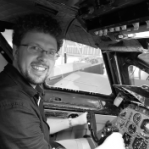




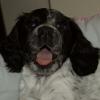
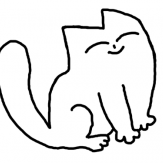
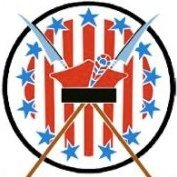
.thumb.jpg.d17ff607fc7e89ed057e63fcb6f2a888.jpg)



